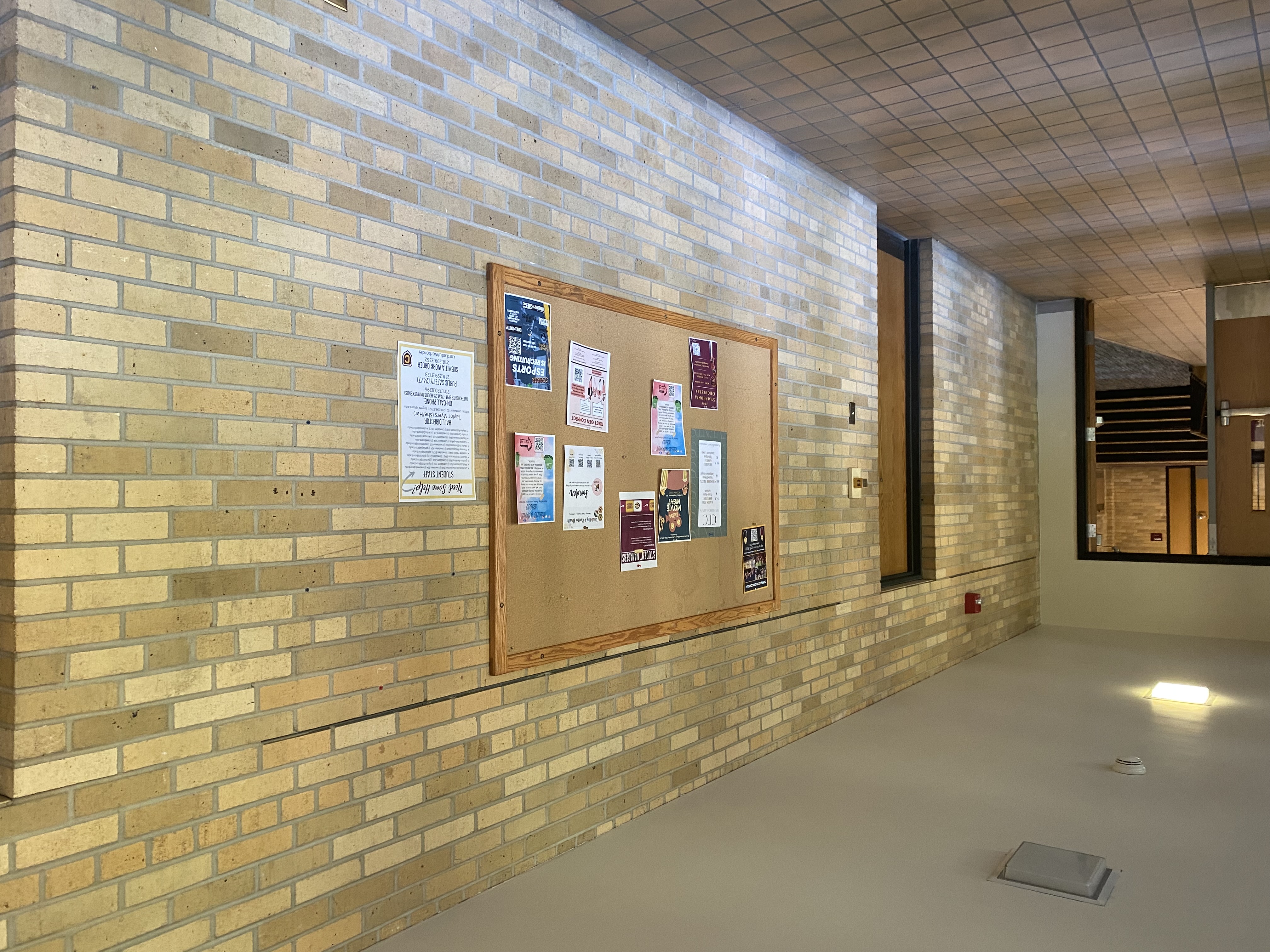MOORHEAD – From “Ole and Lena” outside of Knutson, to the mosaic in the entrance to the Carl B., art is an iconic part of Concordia’s campus. Students may be surprised to learn that “Tie”, a painting that used to be housed in Livedalen’s entryway, was replaced with a bulletin board over summer break.
“Tie” is an oil painting by Gerald Groch that depicts the various steps of tying a tie in sixteen frames–two rows of eight.
The painting has been commonly featured in campus tours, being acknowledged when groups pass through Livedalen. Members representing the Art Collection Committee were not a part of the decision to take down “Tie”.
Concordia’s Art collection works to store and display art on campus. Chris Mortenson is an associate professor in the Concordia Art Department and director of the Cyrus M. Running Gallery and the chair of the college’s Art Collection Committee. He was surprised at the departure of “Tie”, particularly because the Art Collection Committee was not notified until after “Tie” had been removed.
“The collection space was not a part of that decision at all. We just got word that there was an effort to modernize the entry space to Livedalen and potential branding initiatives that might be being worked on for that space,” Mortenson said.
Mortenson clarified that no one did anything wrong in the removal of “Tie” from Livedalen. There is no formal policy for the removal of art in campus spaces.
The Livedalen entryway, or corridor as it’s described on the art collection’s website, acts as a hallway connecting Livedalen Hall and Normandy, which houses the Center for Student Success and the bookstore.
Mortenson said that he and others involved in the Art Collection Committee are working on creating a policy in conjunction with facilities, to make sure the collection is informed when pieces are removed.
The Art Collection stores pieces in the basement of the Mugaas Plant. If a department wants a piece to be displayed, they contact Lori Feigum, the art department’s office manager, who’ll connect them with the database of works.
According to Feigum, the collection currently includes 492 pieces, 120 of which are in storage in Mugaas. Once a piece is chosen, Feigum sets up a work order with facilities that will place the piece in its desired space.
When President Kraft stepped down, the Art Collection was contacted to remove art from his office and display new art for President Irvine. Departments on campus can also request art be displayed in their buildings.
“We sort of work with a shoestring–not even a shoestring budget–we work with no shoes, realistically,” Mortenson said.
The art collection relies on donations to acquire new pieces because it does not receive funding from the college.
“It’s not a large collection,” he said. “I would love to grow it, but the only time we’re offered that chance is donations or, like, the Heimarck Center had some money earmarked for art.”
Recently, with the construction of the Heimarck Center, a part of the building’s budget was set aside to purchase new works for the building. Some pieces were purchased from local galleries and museums while others were created by faculty on campus.
On average, the collection gets a couple of donations every year, Mortenson said. Additions are vetted by the Art Collection Committee. The committee is composed of five people on campus, including one student member. Pieces are often added if they fit with the others in the collection or have a connection to the college in some way, like the Cyrus M. Running Gallery.
Not every piece of art on campus is a part of the collection. When art is added to the collection it gains insurance protection from loss. One notable art piece that isn’t a part of the collection is Ian Scheele’s “Macroscope” on the ceiling of the ISC lounge.
According to Mortenson, an argument against art in dorm halls or public areas is that pieces could get damaged or ruined. However, he said he beleives that art should be up in public spaces.
“You know, something could happen to it in the ISC,” Mortenson said.
He says that there is risk in displaying art, but that doesn’t mean art should never be displayed. He explains that the art collection could be damaged no matter where it is, the Mugaas Plant could flood or an incident could occur to display art in any of the buildings on campus.
“I think that’s a danger that you risk,” he said.
Katrina Ustanko is a sophomore English Writing major who is starting their second year as a resident in Livedalen. She said she would like to see art back in the Livedalen entryway.
“It breathes life into what would otherwise just be, you know, just bricks along the wall,” Ustanko says.
Ustanko said she enjoys seeing art when he walks around campus. With “Tie” gone, they said that Livedalen feels different.
“It just feels a little bit less full of life,” Ustanko said.
Mortenson said that “Tie” could return to public display if that was something students wanted.
“I would always choose art over branding or bulletin boards,” he said.

